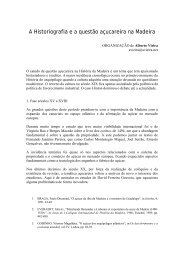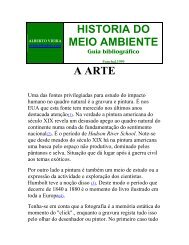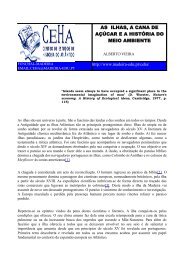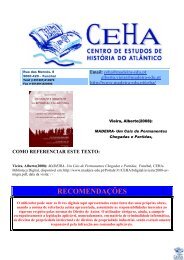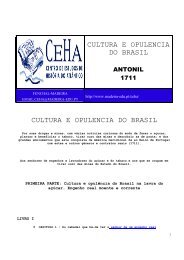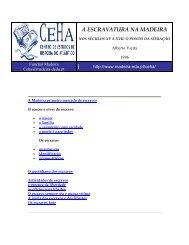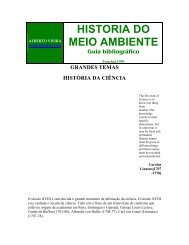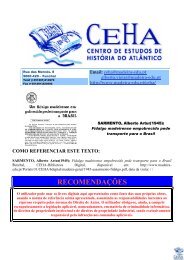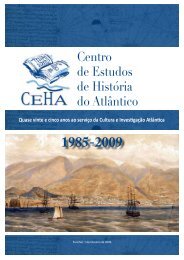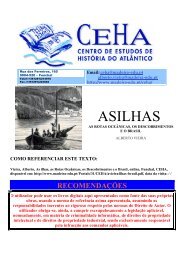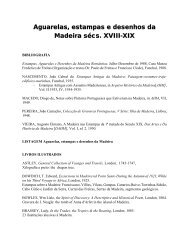SLAVERY IN MADEIRA
SLAVERY IN MADEIRA
SLAVERY IN MADEIRA
You also want an ePaper? Increase the reach of your titles
YUMPU automatically turns print PDFs into web optimized ePapers that Google loves.
services paid in money or sugar. In this group of slaves we include the ones belonging to<br />
the engine owner and the ones that worked for a wage. In Brasil we were also faced with<br />
mixed workforce, but the slaves were a majority. They could either be property of the<br />
engine owner or they could belong to someone else that would rent them.<br />
5. LOOK<strong>IN</strong>G FOR FREEDOM<br />
For many slaves, the door to freedom kept closed until Death, but others a the luck and<br />
happiness of reaching it before dying, with claiming the possible sources of<br />
enfranchisement. The owner's Death could be a possible way for freedom. It was<br />
precisely from the testimonial disposals that most freedmen came up.<br />
Freedom could also be reached by expressed wish of the slave or his relatives, by means<br />
of paying their value to the owner. The slaves' relatives, namely the free parents, could<br />
pay the "just value" for the release of the sons. When this didn't happen, they would<br />
depend on the good services given for a owners' decision. The Brotherhood of Nossa<br />
Senhora do Rosßrio could interfere in this matter.<br />
At last, escape was the most violent way, although not the most efficient for freedom. But<br />
escape was never the most desired, and it only happened in extreme cases and when the<br />
environmental conditions were favourable. In Madeira, just like in the Canary islands,<br />
there's talk of fugitive guanches in the XV and XVI-centuries, considered a permanent<br />
danger for people andgoods. To these, some others were associated: Moors and Negroes,<br />
which converted the circulation through the interior of the island in a real battle field.<br />
In the case of the release from slavery by the owner's initiative, it is important of find out<br />
the real reason for such an attitude. It is usual to define it as a generosity act, however,<br />
reality seems to be totally different, when we consider the situation in which freedom was<br />
given. The liberation in Madeira was always given only in specific conditions. And it<br />
never comes up alone, as it was always associated to many compensations in return.<br />
For the archipelago of Madeira the majority of liberated slaves result from testimonial<br />
disposals. From the 642, that we were able to gather for the three centuries, only thirteen<br />
assumed the free condition by means of enfranchisement while the owner still lived and<br />
183 (29%) by testament. These are in its majority from Funchal (72%) where, the<br />
majority of the testaments come from (79%).<br />
For the slave, the testimonial disposition was the hope for freedom. In the group of<br />
liberated men by testament the majority come up with charges competitiveness. To note<br />
that from 103 (56%) of the slaves that reached freedom after the owner's death, 80 must<br />
satisfy certain charges related to religious festivities and charity duties as well as services<br />
for the owner's relatives.




